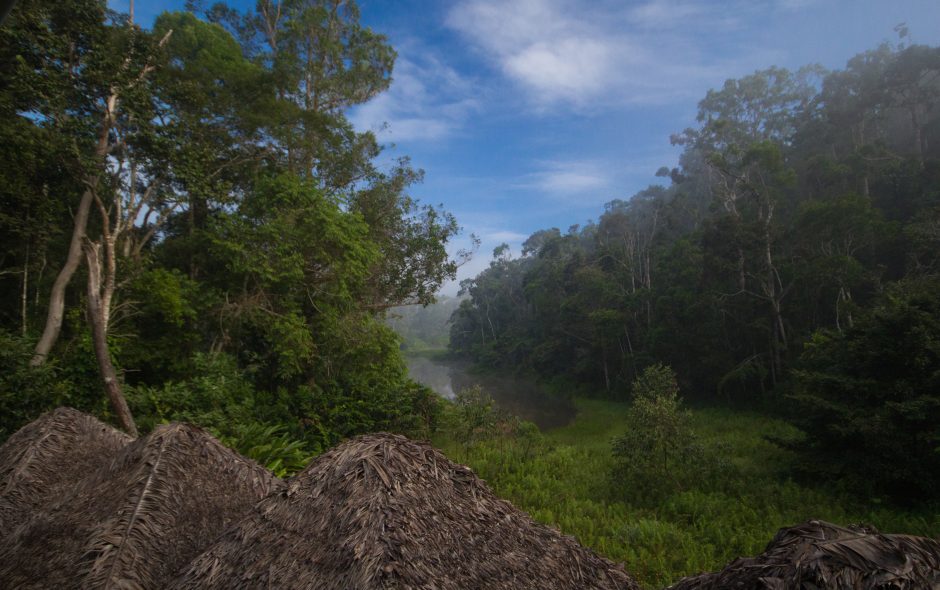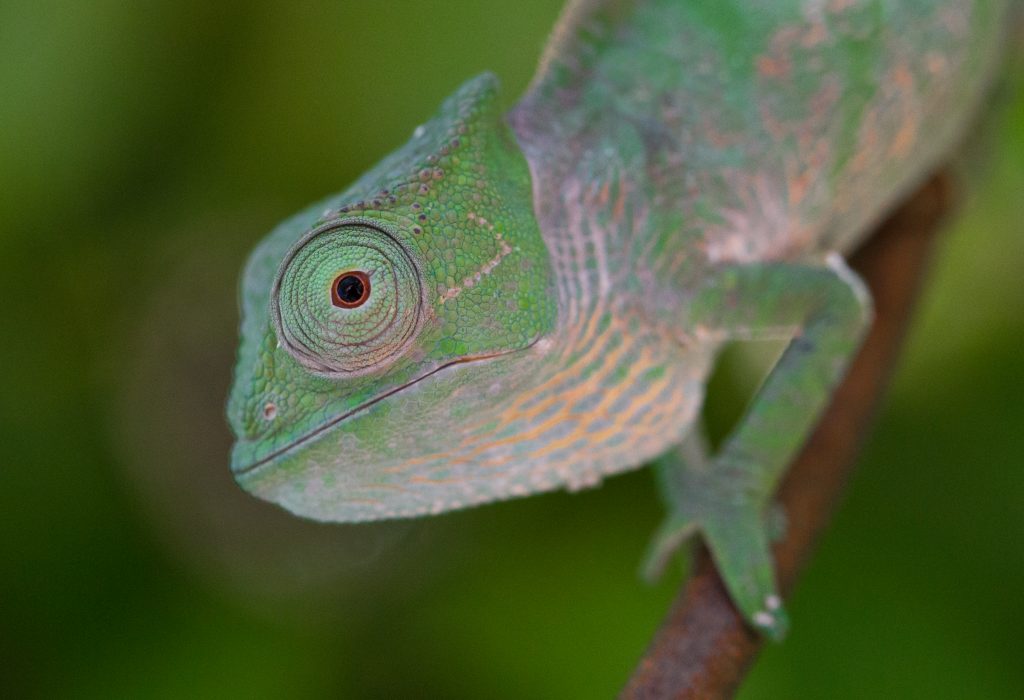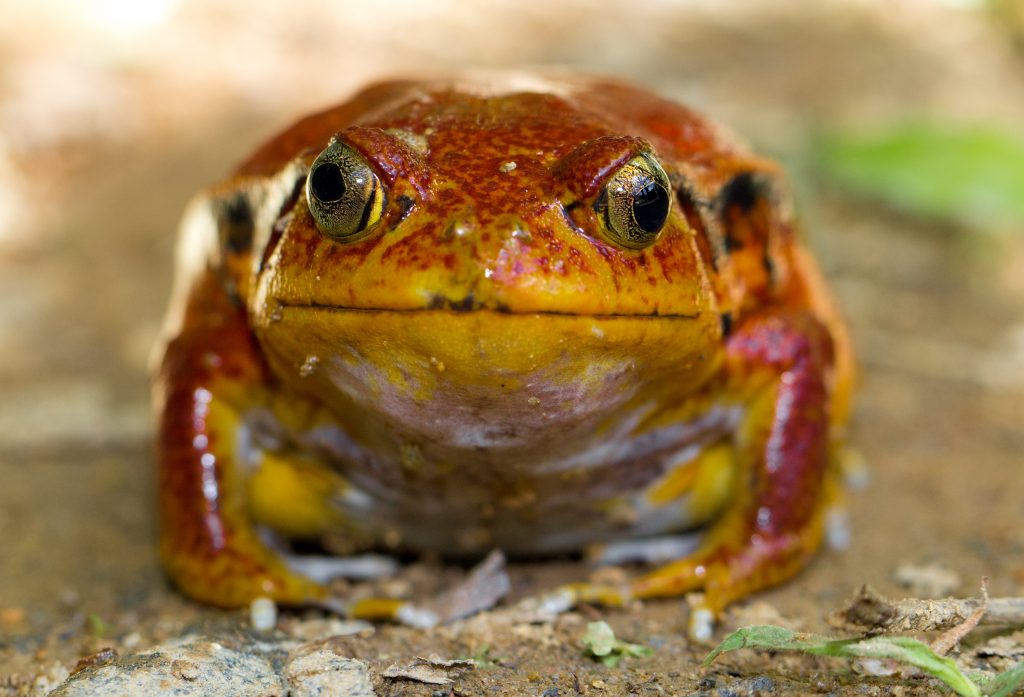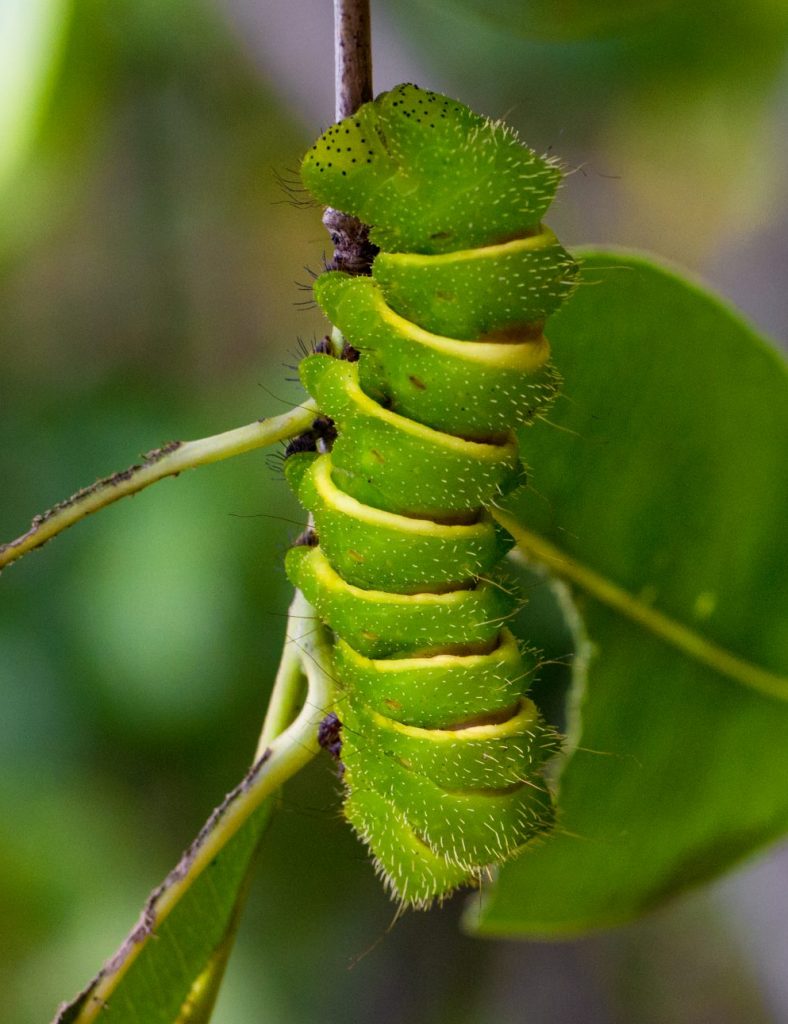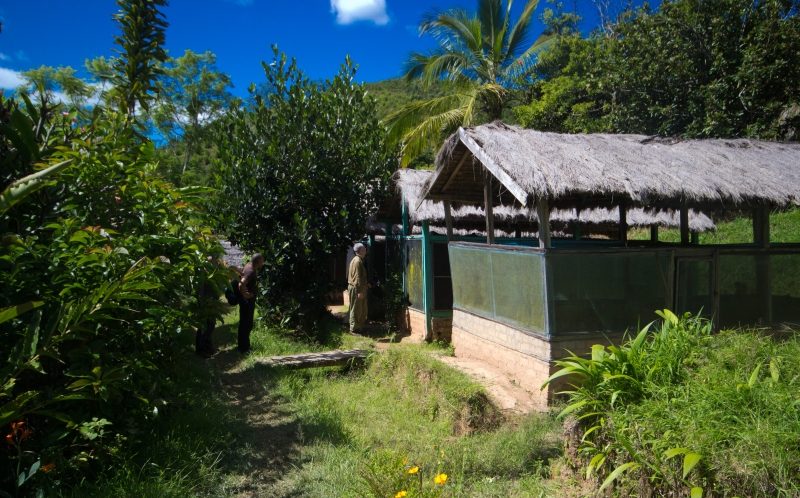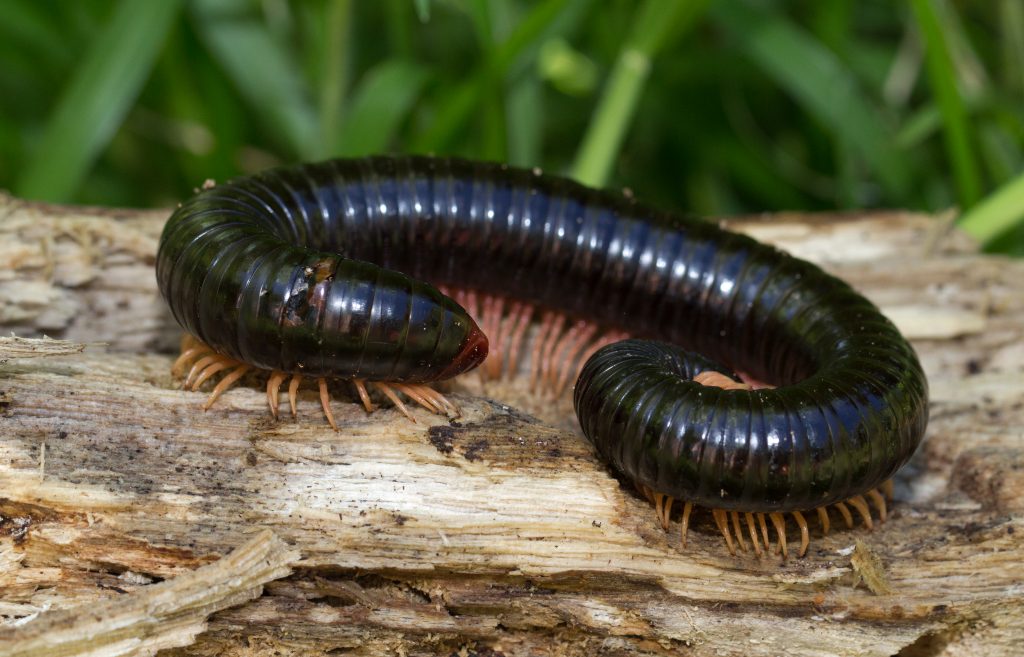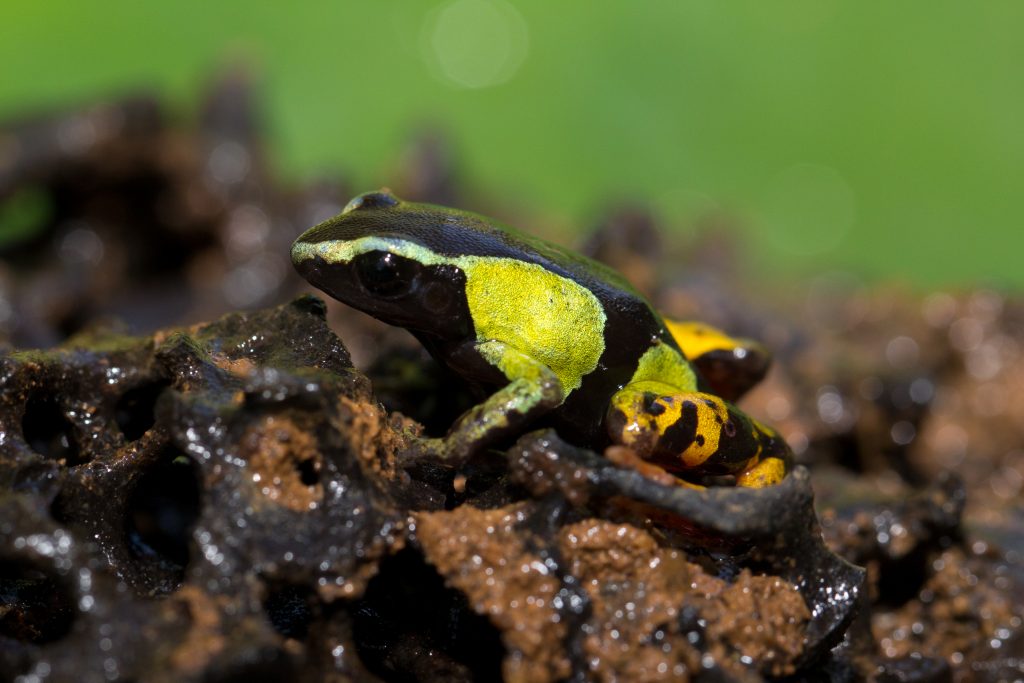Shortly after 6 o’clock, it’s just light – and DAMN COLD. Now I also know why there are three blankets on top of each other in the bungalow. Washing my hair gets canceled, without a hairdryer, I will freeze my brain away. Just before seven: It won’t be canceled. It’s getting warmer. By the way, I have a certain advantage to live so high up and to climb the steep stairs several times a day: I get hot water first because the hot water tank is right behind my bungalow. And warm… yes, it’s really quite warm, not to say boiling hot. If you ever want to peel your skin cheaply, this is the perfect place. So it is best to turn on the water first, turning the tap for appropriate temperature, wait for the water to cool down a little and then step underneath, the other way around is quite dangerous.
A good day starts with a zebu sandwich – it does today. Around nine o’clock we leave Andasibe behind us. A beautiful spot of earth. We drive to the former breeding farm close to Mandraka. On the way, we stop again for a pee break in the middle of a road. Immediately women and children come running to sell us small yellow and red fruits. Heidi says they are “medlars”? Never heard of them. The red ones are guavas, I already tried them with daddy in the rainforest in Analamazotra. Everyone buys a few, for 2000 Ariary I get several bowls poured into a green plastic bag. And how nice it sticks to your fingers when you peel and eat them!
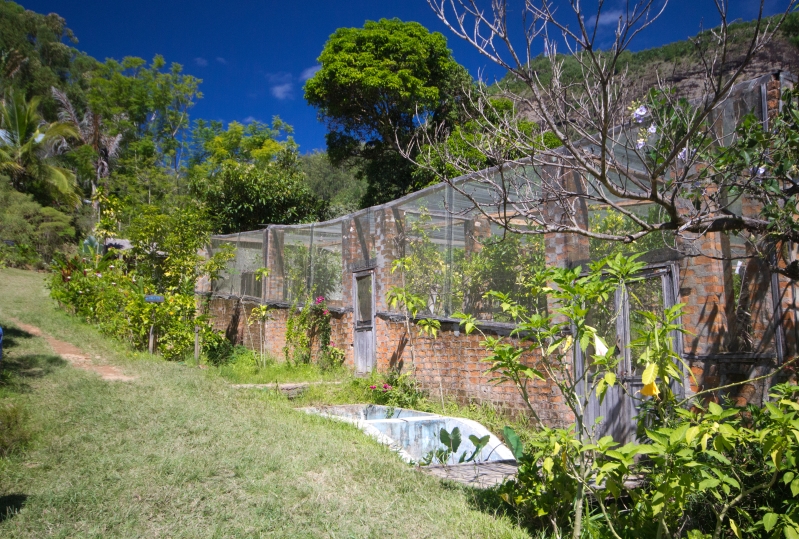
A narrow, steep path leads to the “parking lot” of the farm near Mandraka, which is situated on a slope. On the left are residential and office buildings, on the right are large aviaries, all secured with locks. Up the slope, you get to other aviaries, partly built with bricks. Some school classes are also just there. In former times, the farm was used for export and, on a somewhat larger scale, for breeding for conservation purposes. Today it is more like a kind of degenerate zoo. Despite an amazing variety of species, only 100 animals are bred per year. The owner of the farm is also ill and therefore currently in Paris, so he can no longer personally take care of his farm.
We split up into the usual groups, it’s hot as hell, I’m sweating just from looking around. So first a round of sunscreen for everyone – if I had packed it in the big backpack, which is well tied up on the roof. Fortunately, Elke can help out with sunscreen. We enter the first aviary. It is nicely planted, but the leaf-tailed geckos and chameleons live in smaller wooden aviaries. The latter are relatively dark, quite overpopulated with feeders and there is nothing in except three or four pieces of bark and some tiny plants on the ground. At least that’s how it looks like with the geckos and Brookesia, with some other chameleons and the snakes there are at least many branches. In other aviaries with panther chameleons the animals run around freely, the Phelsuma grandis on the other hand have an aviary with about 200 animals together. Most of the day geckos are accordingly battered.
Of course, the farm offers an infinite number of motifs for photographing: from the tomato frog to Uroplatus giganteus and Calumma globifer, everything is included. Whereby the frogs turn out to be rather ungrateful motives, they just don’t want to sit still. Plop… honked away. On the other hand, the Langaha and Sanzinia snake babies turn out to be enormously friendly and can even be picked up. Okay, before the little thing bit, I put it back. But it’s not really my thing here. I prefer to observe the animals in their real habitat instead of going from aviary to aviary. In the rainforest, you at least earn the photos with a lot of effort!
At noon we drive some 100 m further to the village of Mandraka to get something to eat. At the roadside, there is a small restaurant where we push the tables together. There is some chewy zebu with lots of rice, with THB you can wash everything down. Cool THB is apparently also available in the last corners of Madagascar. And in contrast to some coke bottles from the early 70s, the beer obviously has enough sales to be not older than a few years. Without rusting crown caps. On the streets, as always, women and children are walking around offering fruit on large metal plates – or simply balancing on their heads around us. Lore buys bananas and with some translation help, she also manages to buy strange red, rock-hard fruits, which I then try. Yeah, tastes like nothing, but the bananas are great.
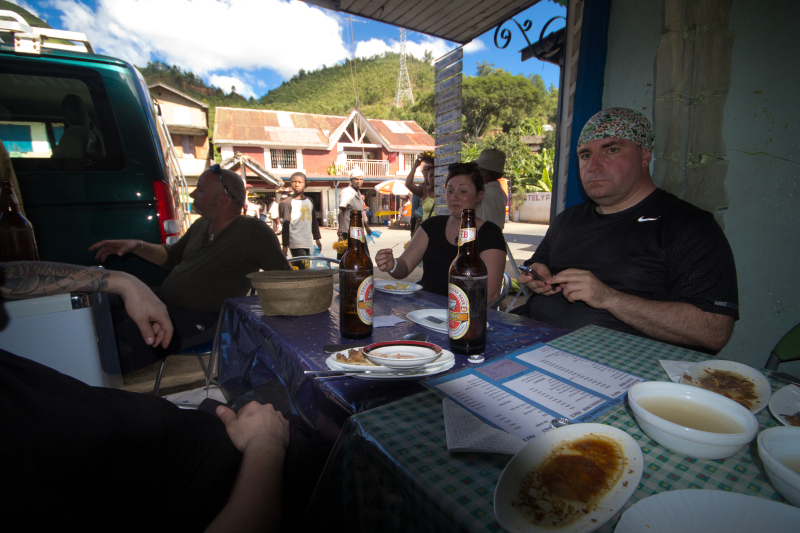
After lunch, we look for a toilet. The restaurant also has one, you walk through the backyard, past a sink, down five steps and stand in front of a barrack with blue doors. On one of the doors, there is a toilet sign, on the others not. Gerd opens the left one, looks inside and decides that the bush toilet outside the village would make a fantastic alternative. Martin joins him. I use the toilet once, but without touching anything (my legs hurt!). I also switch off the nose for a short time, the manure smell is pretty awesome. It is also quite dark, but has its advantages when the door is closed. Then you can’t see what’s sticking to the toilet bowl and the floor anymore. Whether the newspaper balls in the basket serve as toilet paper or were already in use is hard to tell. It was once worth an experience.
It’s time to drive back to Tana. On the bus, Daddy offers us one of his oranges when I ask curiously what it is. But they taste like lemons and they look like lemons. The road is lined with endless rice fields again. Another one and another one and another one… The Taxibrousse – generally filled with more than 20 people, the door in the back standing open and at least one person hanging in the open door, roof overloaded with all kinds of garbage – drive like hell. Otherwise we crawl behind some trucks again. Between many real castles and palace-like complexes with huge walls, multi-story bright stone houses and co., there are completely garbage-covered huts and hovels. At some point, traffic is just one big traffic jam. We fight our way through Tana at walking pace. To the right and left of us cross-country vehicles, taxi busses, scooters, small motorcycles, zebu carts, and Pousse-Pousses. Everybody drives as he wants, there is no order and heaven knows how the cyclists survive here. I have no idea how the motorcycles get through here. Each roundabout means about 30 minutes standing and pushing a few meters forward, again and again, surrounded by children and salesmen. At the window, you are offered everything from towels to ominous mobile phones to fruit. In Tana, we stop at the supermarket to buy drinks and cookies for the long drive tomorrow.
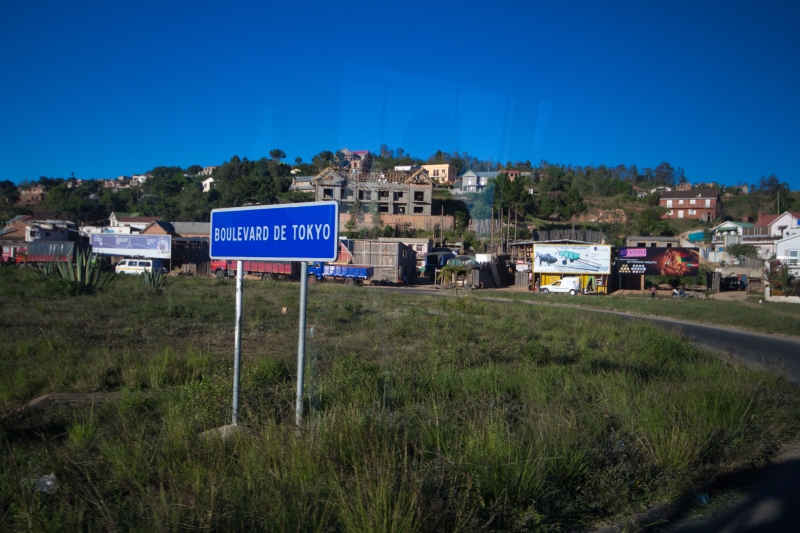
Towards the evening, it is already dark again, we arrive at the Résidence de Raphia. I have room 12 – on the right side of the house over the parking lot, then on the left side through a very narrow small corridor (you have to carry your backpack across, otherwise you get stuck), the last room on the square so to speak. But very clean inside. While I am in the bathroom, I see a cockroach of about six centimeters walking across the floor. I name it Fridolin. Fridolin seems to have some friends, too. But who cares, the room is otherwise fine! Dimby collects the money for the domestic flights – 618,000 Ariary each. After half an hour he sits in front of a pile of banknotes, the highest Ariary note is only 10,000 MGA – that’s a little over 3 €.
For dinner, there are Tornedos (zebu filet, but massaka tsara) with garlic potatoes. Very tasty, although there is ginger in it. You don’t have to economize with ginger in Madagascar, it is said to promote potency and is very healthy. The taste takes some getting used to for the average European. I’m stuffed… and that’s rare here so far! One last THB, then it’s off to the shower and bed.
